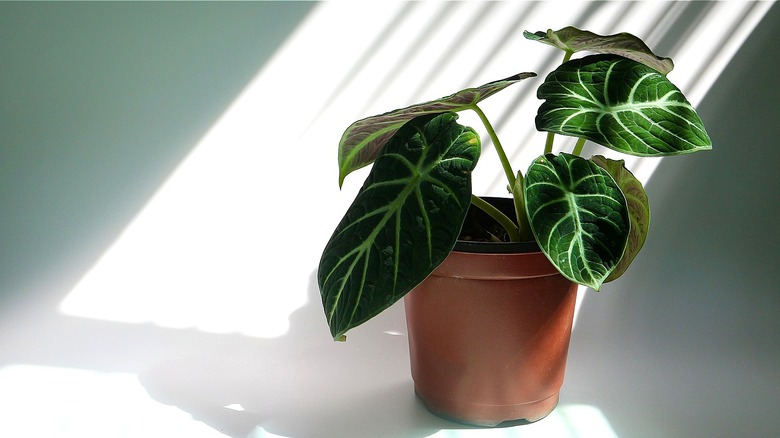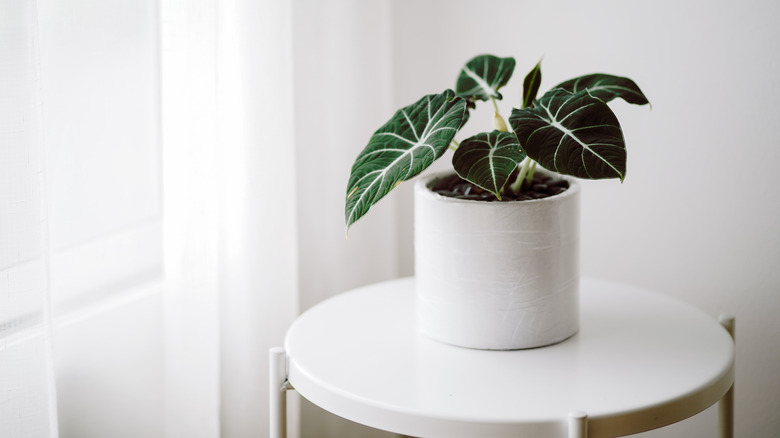The Low-Light Indoor Plant People Can't Stop Buying
Houseplants are beneficial to the décor of your home and your health. They can reduce stress, increase productivity, and improve air quality, according to Healthline. Certain plants can remove VOCs or volatile organic compounds from the air while performing photosynthesis (via Plants.com). To reap the benefits of houseplants, you need to provide them with the correct amount of light, water, and fertilizer.
It's hard to control the light in your home since you can't just create windows. Instead, you can fill your home with plants that do well with low light. All plants need some amount of light to photosynthesize, but each species is different. The most control you can have with houseplants is changing the intensity of sunlight by moving them closer or farther from a window. You should also pay attention to which way your windows face. Northern would provide low light, and southern would provide bright, direct light.
Meanwhile, east- and west-facing windows are suitable for indirect light. You can add supplemental light if you don't have enough sunlight for your plants. Texas A&M AgriLife Extension explains that you should use a blue and red grow bulb, but strictly foliage plants can live with cool-white fluorescent lights, too. Luckily, certain species of plants do well with low-light conditions.
Alocasia black velvet
Alocasia black velvet (Alocasia reginula) is an excellent plant for your home if you have low light. This plant is also known as the little queen and is characterized by its dark velvet leaves that are shaped like teardrops with silver veins running through them. They're native to Southeast Asia, where they grow on the jungle floor. This type of Alocasia is used to the rays of sunlight that slip through the leaves of plants above them, so they will do well in your low-light home. Terrarium Tribe explains that its leaves are dark to help them absorb the little sunlight available.
An east- or west-facing window is a good spot for Alocasia black velvet. Other options are putting them in front of a north-facing window or a distance away from brighter ones. Some signs to look out for are leggy stems and spaced-out leaves. This could mean that your plant needs more sunlight. However, if the leaves are curling, you may need to move them to a darker spot.
How to care for Alocasia black velvet
Caring for an Alocasia black velvet is relatively easy. Once you set up the perfect environment for it, there's little upkeep. The type of soil you put this plant in is crucial because it's prone to root rot. Sunlight helps to dry the dirt, so the less light your plant gets, the less water it'll need. Smart Garden Guide recommends mixing a ratio of 1 part potting soil to 2 parts perlite and orchid bark to provide good drainage. Of course, you'll also want to ensure your plant's pot has adequate drainage holes.
Alocasia should get fertilizer about every four weeks during spring and summer. They have fragile roots, so use a balanced fertilizer or dilute an all-purpose one to half the strength. You should only repot them if necessary because they prefer being slightly root-bound. This plant likes humidity and warmer temperatures. The coldest it can tolerate is 59 degrees Fahrenheit. Before you can be sure that this plant is perfect for your home, you need to know if you have pets or children that may chew on the Alocasia's leaves. This plant is toxic to humans and pets, so keep it away from them by placing them on a high shelf or in a hanging basket.


